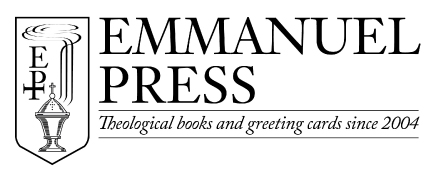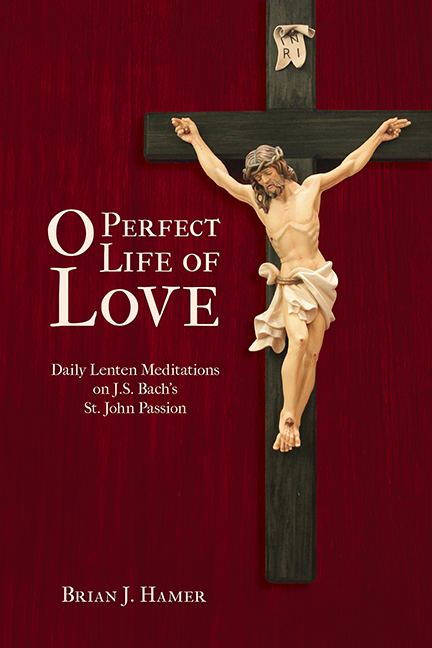NEW BOOK: O Perfect Life of Love by Brian J. Hamer
We are pleased to release our newest title: O Perfect Life of Love: Daily Lenten Meditations on J.S. Bach’s St. John Passion. Author Brian J. Hamer is a pastor of the Lutheran Church-Missouri Synod and an active-duty Navy Chaplain. In addition to his experience in conducting and singing in choirs on both coasts, he writes and edits for a wide variety of publishers on theology, culture, and the arts.
As Hamer states in the Introduction, “It is probably just a coincidence that the New Bach Edition of the St. John
Passion by J. S. Bach (1685–1750) divides Bach’s masterwork into the same number of movements as there are days in Lent. This book of meditations places those forty movements of the St. John Passion as a literary and musical stencil over the forty weekdays of Lent—Ash Wednesday through Holy Saturday, excluding Sundays in Lent—to create a daily listening lectionary. I pray that this careful and deliberate approach to Bach’s masterwork—forty movements in forty days—will assist you, the reader/listener, in your Lenten piety as you behold the life-giving cross, on which was hung the salvation of the world.”
Both the German and English texts are provided to aid in listening, followed by a devotional meditation in which Hamer offers historical, musical, and theological commentary. Enrich your Lenten days by becoming acquainted with or ever more familiar with the St. John Passion through the lens of a Lutheran pastor and musician. Visit the book’s page to find more details, purchasing information, and an excerpt.
O Perfect Life of Love is suitable not only for individual devotions but also for the entire family. Find for more details, purchasing information, and an excerpt here.
Save up to 30% on Scratch & Dent books
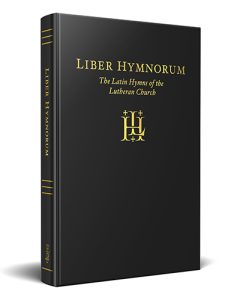 Doing year-end inventory has the added benefit of setting aside titles for our Scratch & Dent sale. The content isn’t affected, yet you can save up to 30% on books with minor cosmetic flaws. Flaws include a fold or scratch on the cover, dented spine or corner, or a cover discoloration. (A Scratch & Dent sticker is placed on the inside cover.) A limited number of the following books are offered at reduced prices:
Doing year-end inventory has the added benefit of setting aside titles for our Scratch & Dent sale. The content isn’t affected, yet you can save up to 30% on books with minor cosmetic flaws. Flaws include a fold or scratch on the cover, dented spine or corner, or a cover discoloration. (A Scratch & Dent sticker is placed on the inside cover.) A limited number of the following books are offered at reduced prices:
- Liber Hymnorum – now $26.25
- What an Altar Guild Should Know – now $9.00
- He Restores My Soul – now $13.50 (there are enough copies available for a small book group)
- He Remembers the Barren – now $11.25
- Apostolic Agenda – now $18.00
- God With Us – now $11.20
- Thy Kingdom Come – now $12.80
- Liturgical Forms – now $28.00
- Ceremony and Celebration – now $20.00
These prices will not be reflected each book’s page. Instead, you will need to contact us with your mailing address and order details to purchase any of these books. You are welcome to add any full-price items to your order. Standard shipping rates apply. After we receive your email, we’ll send you customized Paypal invoice with payment required within 24 hours.
Regarding Christmas cards: Does beauty matter?
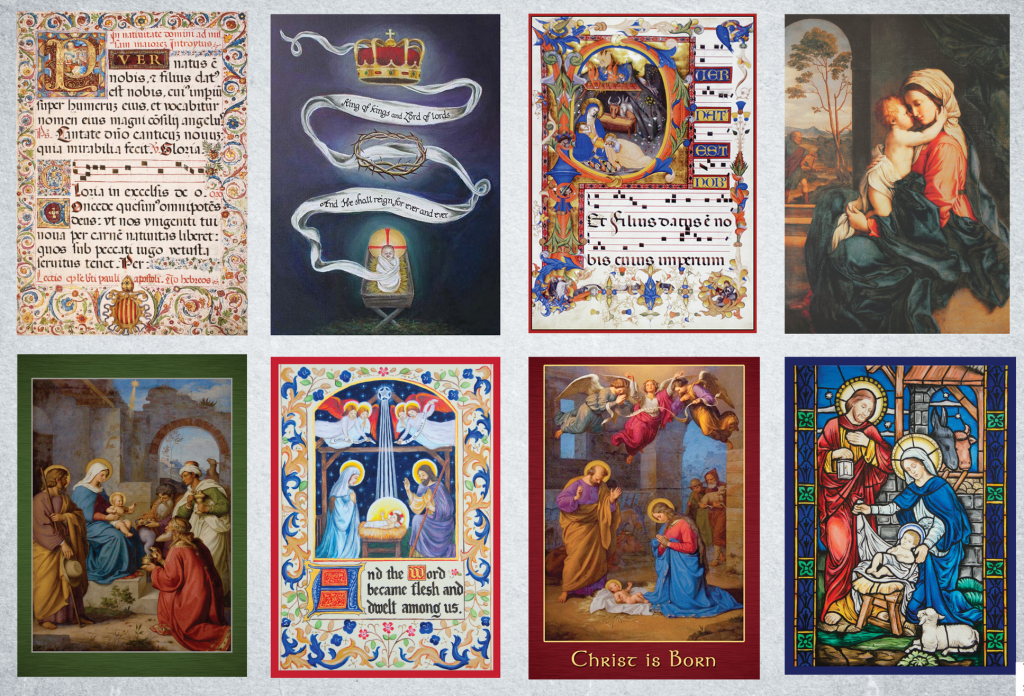 Why send Christmas cards when an email will do?
Why send Christmas cards when an email will do?
Why send beautiful Christmas cards when any will do?
Our customers tell us that they intentionally seek out beauty in conjunction with a clear confession of Jesus. They want Scripture and hymn stanzas, not made-up greetings, that point to the birth of our Savior, who is Christ the Lord.
Every year, thousands of Emmanuel Press Christmas cards circulate throughout the world. We appreciate your support of our small business. A blessed Advent to you!
______
God can use beauty to “arrest His people by their senses to awaken us from the slumbering economy of pragmatism” (Ramsey, Rembrandt Is in the Wind).
Introducing our newest Christmas card: “Incarnation”
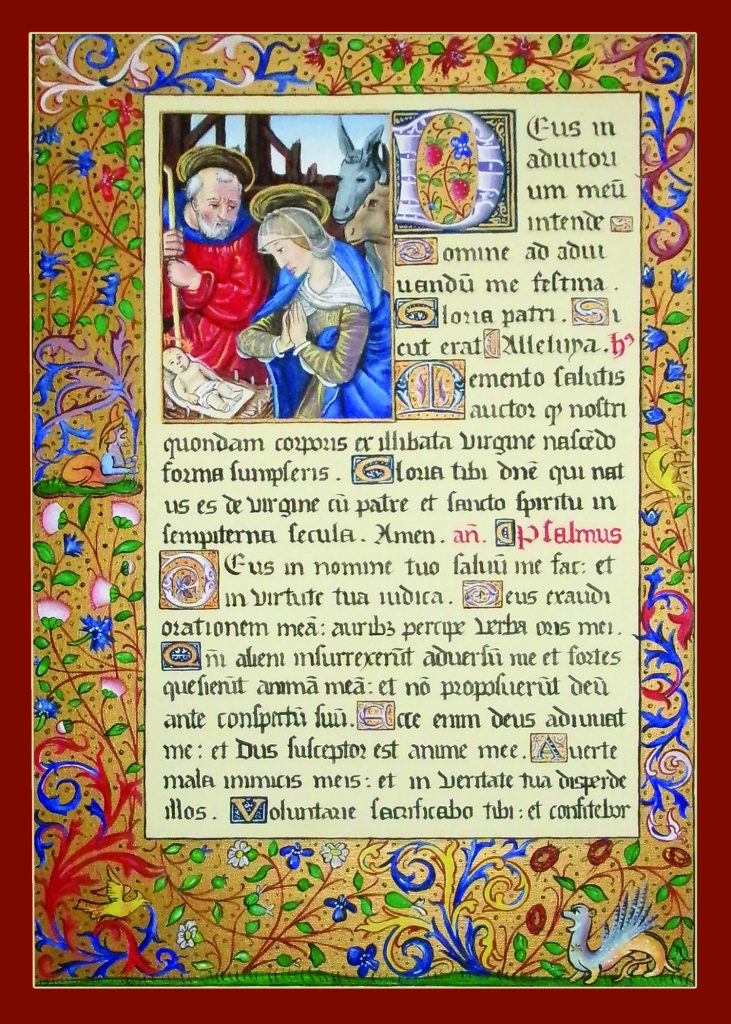 We are delighted to collaborate with Lutheran artist Kelly Klages for this year’s new Christmas card, “Incarnation,” bringing the total to
We are delighted to collaborate with Lutheran artist Kelly Klages for this year’s new Christmas card, “Incarnation,” bringing the total to
15 designs exclusive to Emmanuel Press. Kelly’s original acrylic on canvas painting is an illuminated manuscript based on a page from a 15th-century prayer book by Jean Poyet and his workshop.
The text follows a liturgical format, opening with “Deus in adiutorium meum intende,” with the response “Domine ad adiuvandum me festina,” — “Make haste, O God, to deliver me; make haste to help me, O Lord.” Next is “Gloria Patri” (or, “Glory be the Father and to the Son and to the Holy Spirit”), then “Sicut erat” (“as it was” in the beginning, is now, etc), and “Alleluia.”
A devotional hymn verse starts on the 9th line with the word “Memento,” translated as follows:
Be mindful, author of our health,
That thou sometime didst take on thee
Of a pure virgin being born,
The form of our humanity.
Glory be unto thee, O Lord,
That born was of the virgin pure,
With the Father and the Holy Ghost,
All ages ever to endure. Amen.
Finally, after the red “Psalmus” are the first six verses of Psalm 54 (Psalm 53 in the Vulgate). On the back of the card is an encouragement to visit our website for a translation and description of the artwork, for the sake of the recipient.
The inside text of the card is Galatians 4:4-5:
But when the fullness of time had come,
God sent forth His Son, born of woman,
born under the law, to redeem those
who were under the law,
so that we might receive
adoption as sons.
Visit our Christmas cards page to see our 15 Christmas cards, all unique to Emmanuel Press and always focused on Christ.
Kelly Klages is a native of Baltimore, Maryland. She earned a degree in Studio Art from Goucher College in 2003 and interned at Beaumont Pottery in Phoenix, Maryland. In 2004, Kelly married Alex Klages and moved to Winkler, Manitoba, where Alex was called to serve as pastor to two congregations in the Lutheran Church-Canada. Kelly’s work has been on display in various galleries and locations throughout southern Manitoba, including the Pembina Hills Art Gallery, the Tiger Hills Art Gallery, and the Manitoba Legislative Building in Winnipeg.
Over the years, Kelly has taken a special interest in detailed portraiture, liturgical artworks, and miniature painting. Her primary medium is acrylics, but she enjoys experimenting with many forms of art and crafting. In 2011, she created a book of illustrated hymns for children called Hosanna, Loud Hosanna, using colored pencil. She has also illustrated a couple of board books for Kloria Publishing, created magazine covers for The Canadian Lutheran, and is currently a regular artist/supplier for Ad Crucem.
Kelly Klages currently lives in Morden, Manitoba, Canada, with her husband and three children: Anastasia, Micah, and Timothy.
Christmas in July! Save up to 20% on EVERYTHING
It’s time for our annual Christmas in July sale! Save up to 20% on all books and Christmas cards through the end of the month. Browse our book selection using the tabs above, keeping in mind that these sale prices are better than our usual bulk discounts. If you’d planned to place a bulk order in the future, now is the time!
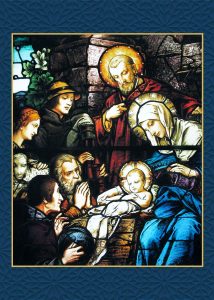
The card pictured at right, “God Most High,” depicts the holy family in stunning stained glass, gathered together with shepherds in adoration of the Christ child. The inside text is Stanza 3 of Martin Luther’s Christmas hymn, “From Heaven Above to Earth I Come”:
This is the Christ, our God Most High,
Who hears your sad and bitter cry;
He will Himself your Savior be
From all your sins to set you free.
Luther wrote the text of this hymn in 1534 as a sort of pageant or Christmas devotion for his own family. In fact, this particular stanza is addressed to the shepherds as part of “an extended paraphrase of the words of the angel from Luke 2:11–12. Luther goes beyond a simple retelling of the story to emphasize the great joy that comes from knowing that Jesus came ‘from all your sins to set you free,’” as Pr. W.H. Otto observes in a Lutheran Witness article from 2009. His entire article is worth reading to understand the hymn’s structure and how its writing was influenced by the 14th-century medieval folk tradition of the garland song.
Now Available: The Great Works of God: Leviticus + An endorsement from Dr. Geoff Boyle
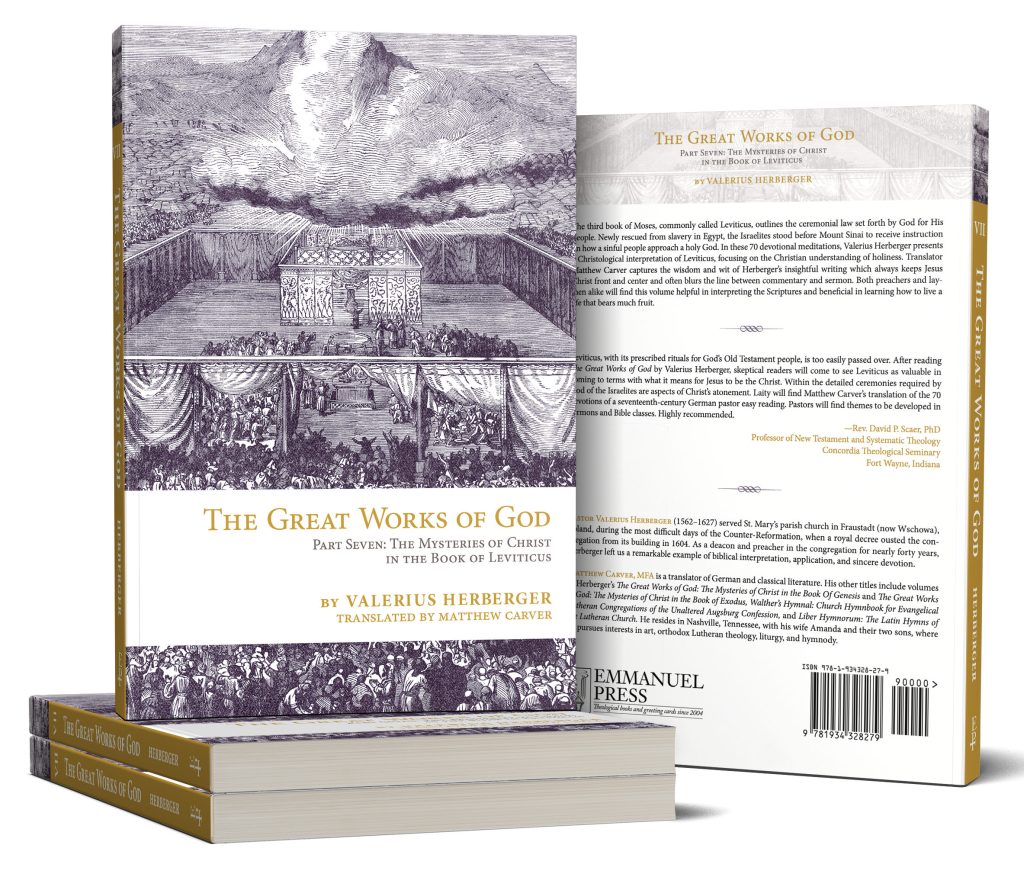 We are delighted to announce the release of The Great Works of God, Part Seven: The Mysteries of Christ in the Book of Leviticus, written by Valerius Herberger, translated by Matthew Carver. Find a description of the book, purchasing information, endorsements, and excerpts here.
We are delighted to announce the release of The Great Works of God, Part Seven: The Mysteries of Christ in the Book of Leviticus, written by Valerius Herberger, translated by Matthew Carver. Find a description of the book, purchasing information, endorsements, and excerpts here.
In addition, we offer you the following review from Rev. Dr. Geoffrey Boyle, Professor of Pastoral Ministry and Missions at Concordia Theological Seminary, Fort Wayne, Indiana:
“Consolation in the name of Jesus—that’s what Valerius Herberger delivers in Part Seven of his meditations on Scripture. Much like Augustine’s Confessions, this devotional commentary teaches and exhorts, convicts and comforts the Christian through a running prayer to the Father, through the Son, with the Holy Spirit. Every page richly orders all of Leviticus towards Jesus Christ and His atoning sacrifice for us. Yet, as Herberger sees Jesus in the covenant to Adam and Eve, Abraham, Isaac, and Jacob, he’s never willing to leave us as the baptized out either. It’s always looking back and forward, and always from the cross of Christ.
“The breadth of Scriptural knowledge and citation, along with hymns and classical poems, makes this series of meditations through Leviticus a true nourishment of the soul, and Matthew Carver’s translation allows one to feed without interruption! That is, the book that causes most of us to stumble while reading through the Scriptures—Leviticus—comes to us, through Herberger’s insight and Carver’s translation, as a book of Christ. Herberger shows how profitably and clearly Leviticus ‘explains how the Lamb of God was slain from the beginning of the world (Rev. 13:8). From the beginning of the world, His bloody death was always seen in the sacrifices of the people of God; and from the beginning of the world, the power of His merit has also availed for all believing hearts’ (25). Everything points to Jesus: the sacrifice of cattle to His strength; the corners of the altar to the corners of His cross; the sheep to His gentleness and innocence; the goats and kids to His authority and boldness; the doves to His humility; and every burnt offering to Christ the crucified (31, 33). On and on it goes: Here in Leviticus the shadow, there in Christ the truth itself—’This is all full of mystery’ (72). With Herberger as your guide, the ‘Mosaic shell’ of Leviticus cracks and gives forth ‘the precious, delectable nut’ of the Gospel of Jesus Christ (79). And not just Leviticus alone, Herberger claims, but ‘how utterly the whole course of [Christ’s] life is wrapped up in the Old Testament!’ (165). So, ‘Rouse yourself, devout heart, and ponder this. You will discover it in truth’ (123).”
Dr. David Scaer endorses The Great Works of God: Leviticus
 “Leviticus, with its prescribed rituals for God’s Old Testament people, is too easily passed over. After reading The Great Works of God by Valerius Herberger, skeptic readers will come to see Leviticus as valuable in coming to terms with what it means for Jesus to be the Christ. Within the detailed ceremonies required by God of the Israelites are aspects of Christ’s atonement. Laity will find Matthew Carver’s translation of the 70 devotions of a 17th-century German pastor easy reading. Pastors will find themes to be developed in sermons and Bible classes. Highly recommended.”
“Leviticus, with its prescribed rituals for God’s Old Testament people, is too easily passed over. After reading The Great Works of God by Valerius Herberger, skeptic readers will come to see Leviticus as valuable in coming to terms with what it means for Jesus to be the Christ. Within the detailed ceremonies required by God of the Israelites are aspects of Christ’s atonement. Laity will find Matthew Carver’s translation of the 70 devotions of a 17th-century German pastor easy reading. Pastors will find themes to be developed in sermons and Bible classes. Highly recommended.”
Dr. David P. Scaer
Professor of New Testament and Systematic Theological
Concordia Theological Seminary
Fort Wayne, Indiana
Now available for pre-order: The Great Works of God: Leviticus
 Originally written in German by 17th-century Lutheran pastor Valerius Herberger, The Great Works of God, Part Seven: The Mysteries of Christ in the Book of Leviticus, is now available in English. The third book of Moses, commonly called Leviticus, outlines the ceremonial law set forth by God for His people. Newly rescued from slavery in Egypt, the Israelites stood before Mount Sinai to receive instruction on how a sinful people approach a holy God. In these 70 devotional meditations, Valerius Herberger presents a Christological interpretation of Leviticus, focusing on the Christian understanding of holiness. Translator Matthew Carver captures the wisdom and wit of Herberger’s insightful writing which always keeps Jesus Christ front and center and often blurs the line between commentary and sermon. Both preachers and laymen alike will find this volume helpful in interpreting the Scriptures and beneficial in learning how to live a life that bears much fruit.
Originally written in German by 17th-century Lutheran pastor Valerius Herberger, The Great Works of God, Part Seven: The Mysteries of Christ in the Book of Leviticus, is now available in English. The third book of Moses, commonly called Leviticus, outlines the ceremonial law set forth by God for His people. Newly rescued from slavery in Egypt, the Israelites stood before Mount Sinai to receive instruction on how a sinful people approach a holy God. In these 70 devotional meditations, Valerius Herberger presents a Christological interpretation of Leviticus, focusing on the Christian understanding of holiness. Translator Matthew Carver captures the wisdom and wit of Herberger’s insightful writing which always keeps Jesus Christ front and center and often blurs the line between commentary and sermon. Both preachers and laymen alike will find this volume helpful in interpreting the Scriptures and beneficial in learning how to live a life that bears much fruit.
As Carver notes, Herberger “writes mainly for the average educated layperson, with a very personal style. He mostly avoids technical or theological jargon and offers interesting insights….It is useful as a devotional since nothing exactly like this exists today.” Furthermore, Carver explains the book’s wide appeal: “It can be used theologically for perspectives on biblical interpretation and typology, devotionally for personal spiritual enrichment, and homiletically as an example of historical models of applying interpretation.”
Pre-order your copy today!
*Leading up to the book’s release in mid-April 2024, we’ll be posting more details and excerpts. See the right sidebar to sign up for emails or Like us on Facebook to keep updated.
The Altar: An Excerpt from Ceremony and Celebration
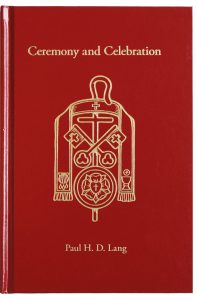 “Long before churches were built, the church’s worship was carried out at or around an altar. In Gen. 8:20 we read that ‘Noah builded an altar unto the Lord.’ Even before that, ‘Cain brought of the fruits of the ground an offering unto the Lord. And Abel brought of the firstlings of his flock and of the fat thereof’ (Gen. 4:3, 4). These sacrifices must have been offered on an altar. Therefore, the altar was the place of worship before there were church buildings, and the altar is more than an ornament or piece of furnishing in a church. It is a monument or object around which and in which the church’s worship is centered.
“Long before churches were built, the church’s worship was carried out at or around an altar. In Gen. 8:20 we read that ‘Noah builded an altar unto the Lord.’ Even before that, ‘Cain brought of the fruits of the ground an offering unto the Lord. And Abel brought of the firstlings of his flock and of the fat thereof’ (Gen. 4:3, 4). These sacrifices must have been offered on an altar. Therefore, the altar was the place of worship before there were church buildings, and the altar is more than an ornament or piece of furnishing in a church. It is a monument or object around which and in which the church’s worship is centered.
“We may regard the altar as: 1. the Lord’s table, 2. an emblem of sacrifice, and 3. a symbol of God’s presence.
“In one of its aspects the Holy Communion Service is a fellowship meal in which we are united with Christ and all fellow believers in a holy union or communion. As such it is celebrated at a table. This table is the altar, which for that reason is called the Lord’s table (1. Cor. 10:21).
“The altar is also an emblem of sacrifice. The word altar itself indicates this. It comes from the Latin altare ara, which means an elevated place for sacrifice. In the church’s worship the altar represents by association Christ’s sacrifice of Himself for the redemption of the world, and the place where the benefits of this sacrifice and all the blessings of God are conveyed to the believers. But the sacrificial aspect of the altar does not end there. It is the monument on which we offer in response to God’s mercy our sacrifices to God, that is, our sacrifices of prayer, praise, thanksgiving, and such material tokens of the offering of ourselves with all we are and have as money, bread, and wine.
“Thirdly, the altar is a symbol of God’s presence. It symbolizes the place where God and His people meet. Our Lord Himself refers to the altar as a symbol of God in Matt. 5:23 and 23:18-20. The altar stands for God as our flag stands for our country. That is why we direct our worship to the altar and reverence it by bowing, genuflecting, and kneeling. That is also the reason why the altar itself, and not any of its surroundings or ornaments, such as crucifixes, reredos, pulpit, or any other object, is in matter of location and all other considerations the focal point and center of the church’s worship and the church building.”
-Paul H.D. Lang in Ceremony and Celebration
Thy Kingdom Come: An Excerpt from Septuagesima
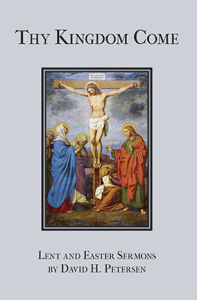 “The main point of the parable is that entrance into the kingdom comes by grace. The workers are rewarded for work they did not perform. This is hardly a surprise to us; in fact, we practically expect it.
“The main point of the parable is that entrance into the kingdom comes by grace. The workers are rewarded for work they did not perform. This is hardly a surprise to us; in fact, we practically expect it.
“G.K. Chesterton once said, ‘Do not be proud of the fact that your grandmother was shocked at something which you are accustomed to seeing or hearing without being shocked…It may be that your grandmother was an extremely lively and vital animal and that you are a paralytic.’
“Chesterton has in mind immoral things. He means, ‘Don’t think you are more sophisticated than your grandmother because you watch television shows full of vulgarities and aren’t bothered by them. It could be that she was highly intelligent and sensitive and you have been paralyzed by evil so much that you don’t even notice it.’
“The same sort of numbness applies to the Gospel as well. I fear that it is even worse. We’re not just numb, but we’ve crossed over the line drawn by Bonhoeffer into ‘cheap grace.’ I fear we’re now guilty of thinking grace is worse than cheap; it is a right, an entitlement, as though God owed us salvation. Repent.”
–These are the first 4 paragraphs from the sermon for Septuagesima, based on Matthew 20:1-16. Find Thy Kingdom Come here.
